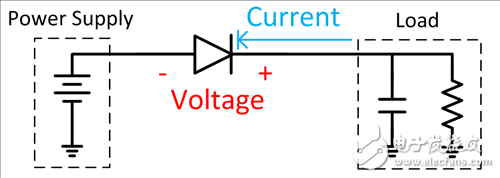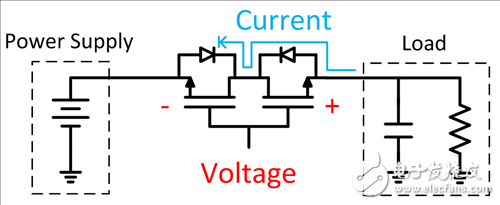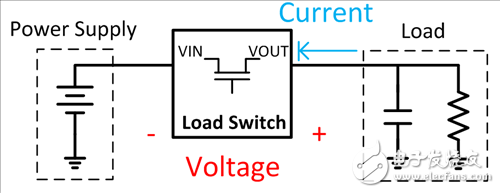When using electronic components, you sometimes inevitably smell the scorching of chips. This is the fault of the reverse current. The reverse current is due to the occurrence of a high reverse bias voltage, and the current in the system operates in the opposite direction; from the output to the input. Fortunately, there are many ways to protect your system from reverse current. This is the first article in the Reverse Current Protection series blog post. In this article, you will be able to have a high level overall understanding and understanding of existing solutions. Â
the reason
The most common cause of reverse current, the reverse bias voltage, is that the voltage at the output is higher than the voltage at the input, so that the current flows in the system in the opposite direction to the flow you want. This is shown in Figure 1.

Figure 1: Reverse current
VIN Because the power loss suddenly becomes zero, making the system output voltage higher than the input voltage, this situation is likely to happen. Or the power MUXing accidentally caused a reverse voltage event.
How to prevent?
Reverse current may damage the internal circuit and battery power. In fact, even cables can be damaged and connector performance can be reduced. This is also the reason that the device catches fire because the large current causes an exponential increase in power dissipation.
The protection function needs to keep the reverse current at a very low level. This means that for the reverse voltage limit. There are three common ways to prevent reverse current: Design a system that uses a diode, FET, or load switch.
diode
Compared to FETs, diodes are less expensive and easier to integrate. They are ideal for high voltage, low current applications. However, if you have ever used a diode, you must be very familiar with the forward voltage drop it causes, which will shorten the battery life and cause VCC (usually) to drop approximately 0.6-0.8V. This voltage drop reduces the efficiency of the power circuit and increases the overall power dissipation of the system.
For these reasons, Schottky diodes are a common alternative; they have lower forward voltage drops. However, they are also more expensive and have higher reverse current leakage, which can lead to system problems. Figure 2 shows a diode in the system that blocks the reverse current.

Figure 2: Diode Reverse Current Protection
FET
Because of its low forward voltage and high current handling capability, FETs can help when you must keep lower power dissipation. For a N-type metal oxide semiconductor (NMOS) FET placed in a ground path, you align the body diode's direction with the normal current flow. By using this method, if someone incorrectly installs the battery, the gate voltage is low, which prevents the FET from turning on. However, when the battery is properly installed, the gate voltage is high and its channel is shorted to ground.
In order to block the current in both directions when the FET is off, you can also connect the FET back to back. Compared to diode solutions, the voltage drop from the power supply to the load is lower, but this implementation takes up a lot of board area. Figure 3 shows an example of a back-to-back FET used to block the reverse current.

Figure 3: Reverse Current Blocking with Dual FETs
Load switch
The TI load switch is an integrated electronic repeater that turns the power rail on and off. Most basic load switches in a small integrated package consist of four pins: input voltage, output voltage, enable, and ground, and contain multiple features, including reverse current protection. Figure 4 shows a load switch to block the reverse current.

Figure 4: Load Switch Reverse Current Protection
For example, Texas Instruments' TPS22963 3A load switch integrates reverse current protection and many more features that are all contained in a 1.4mm x .9mm package. Figure 5 shows the common placement of the TPS22963 in the system.

Figure 5: TPS22963 Load Switch
There are several causes of reverse current, sudden loss of VIN, or unexpected events in the power supply MUXing. This can cause system damage and even damage the power supply. TI load switches can be a solution that manages reverse current with a size and cost.
Biogas Generator,Biogas Power Generator,Biogas Electric Generator,Biogas Energy Generator
Jiangsu Vantek Power Machinery Co., Ltd , https://www.vantekpower.com